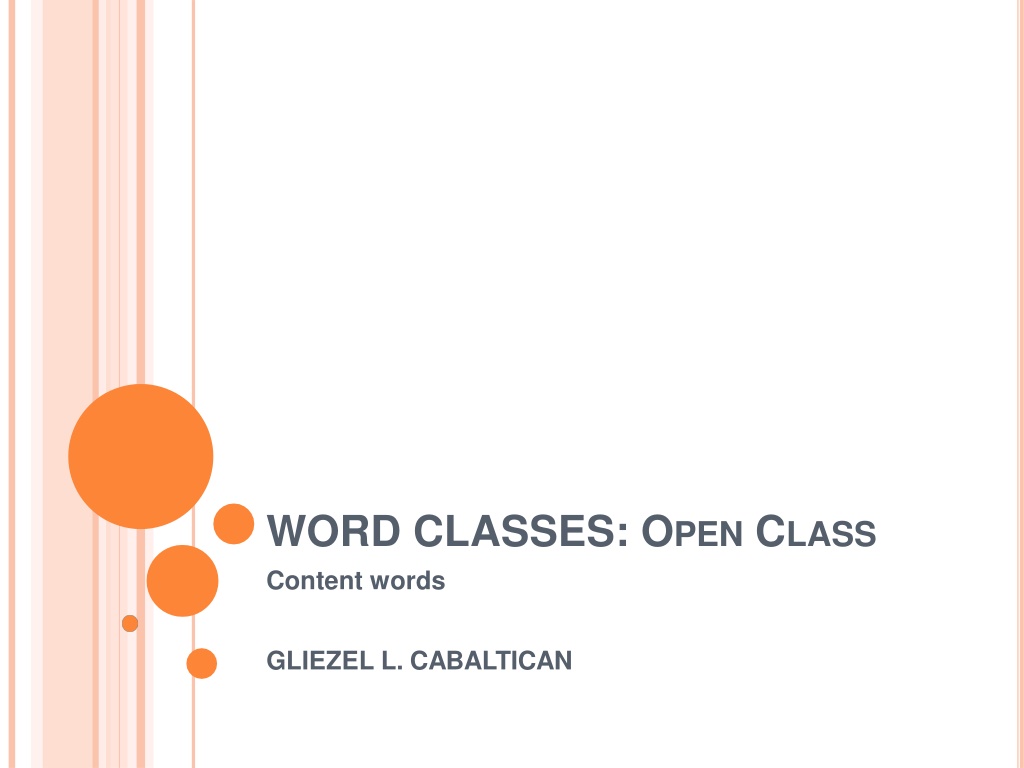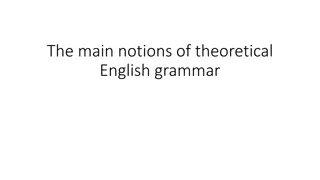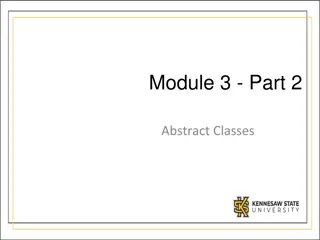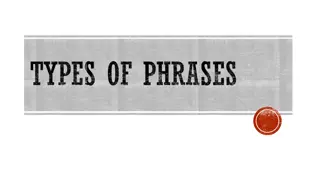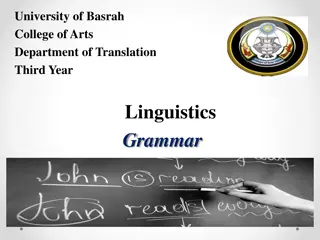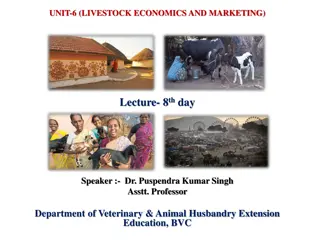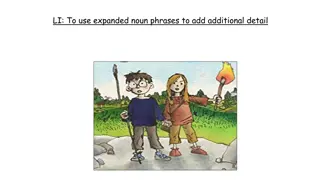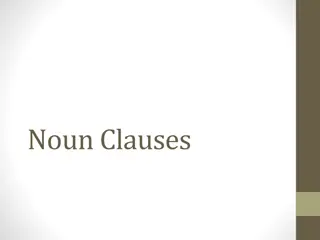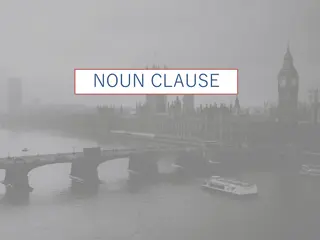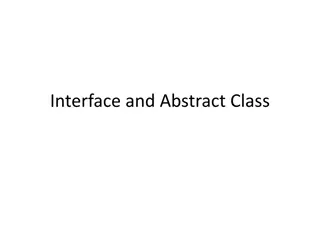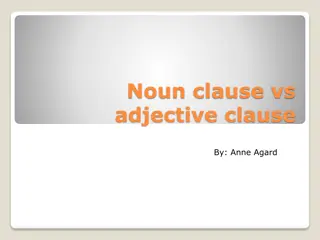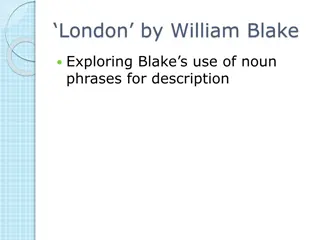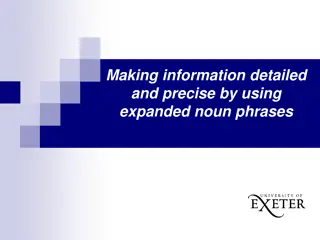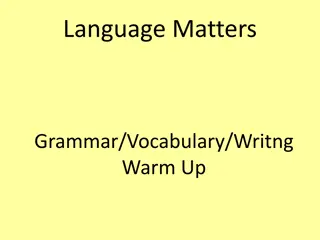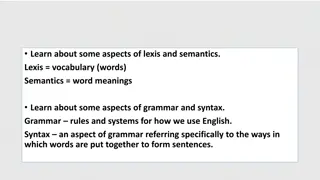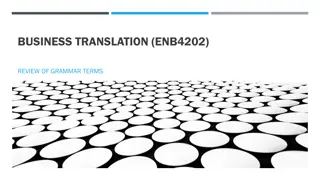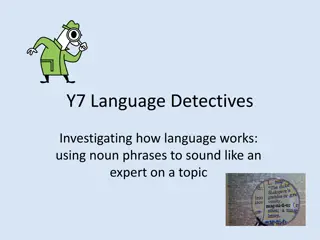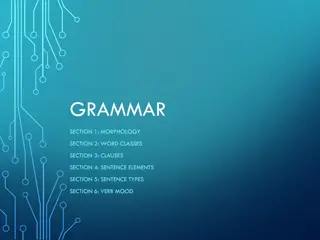Word Classes and Noun Functions in Grammar
Explore the concept of word classes such as open class and minimum free form, structural vs traditional grammar, count abstract vs concrete nouns, noun phrase extensions, properties of nouns, and noun functions in language. Enhance your understanding of adjectives, determiners, prepositions, and various forms of nouns through illustrative examples and explanations.
Download Presentation

Please find below an Image/Link to download the presentation.
The content on the website is provided AS IS for your information and personal use only. It may not be sold, licensed, or shared on other websites without obtaining consent from the author.If you encounter any issues during the download, it is possible that the publisher has removed the file from their server.
You are allowed to download the files provided on this website for personal or commercial use, subject to the condition that they are used lawfully. All files are the property of their respective owners.
The content on the website is provided AS IS for your information and personal use only. It may not be sold, licensed, or shared on other websites without obtaining consent from the author.
E N D
Presentation Transcript
WORD CLASSES: OPEN CLASS Content words GLIEZEL L. CABALTICAN
WORD A minimum free form (Bloomfield) Smallest form that can own by itself
OPEN CLASS Open class words (content words) carry semantic contents. We can and regularly add new words to these classes. Nouns Verbs Adjectives Adverbs
STRUCTURAL GRAMMAR VS. TRADITIONAL GRAMMAR TRADITIONAL Classify and identify words according to meaning STRUCTURAL Classify and identify words according to form I will water the plants. Did you plant these? It s a planted evidence. Give me water. The watering can has a hole.
Count ABSTRACT: difficulty, remark Common CONCRETE: girl, chair NOUN Non-count Proper ABSTRACT: music, anger CONCRETE: milk, gold, oxygen
A noun can be extended to a noun phrase. In the example phrases given below, the noun (in the first example) and the noun phrase (in the remaining examples) is in bold. Note how much the noun phrase can be extended by adding extra information each time. Dogs can be vicious Some dogs can be vicious Some of the dogs can be vicious Some of the bigger dogs can be vicious Some of the bigger dogs in the dog pound can be vicious
ADJECTIVE (small hammer) DETERMINER NOUN (hammer) (such hammer) PREPOSITION (with the hammer)
Properties of nouns: Can be pluralized by adding /-s/ Can occur in frame: [Det (Adjective) Can be added with /- s/ to show possession ]
NOUN FUNCTIONS Subject Barnabas chewed your loafers. (pre-verb) Your loafers were chewed by Barnabas. (post-verb) Direct Object of Transitive Verbs (post-transitive verb) We love Barnabas. Subjective Complement (post-linking verb) My favourite pet is Barnabas.
Indirect Object (between verb and DO) We give Barnabas some biscuits to eat. Object of the Preposition (Prepositional Complement) (after a preposition) These bones are for Barnabas. Object Complement (after DO) We named our dog Barnabas. Appositive (after another noun) Our old dog, Barnabas, died at the garage.
Noun Phrase Modifier The bedroom walls are all oak panels. Books are repaired in the Conservation Lab. Determinatives A determinative is a noun or noun phrase plus the possessive clitic (apostrophe s or s apostrophe) that indicates possession of or some other relationship to another noun or noun phrase. The cat is eating the dog's food. My parents' house is in the same part of town as mine.
A full verb is a word that tells what something is, experiences. someone does or or Transitive FULLVERBS Intransitive Commands Statements Yes-no questions Wh-questions
Baste the chicken. Command: Did you baste the chicken? Are you finished talking? Yes-no question: How will you baste the chicken? Why should I baste the chicken? Wh-question: Statement: Someone will baste the chicken.
Regular Verbs Irregular Verbs dance clear sing cut throw Base form -s form dances clears sings cuts throws -ing participle dancing clearing singing cutting throwing danced cleared sang cut threw Past form danced cleared sung cut thrown Past participle
Present and past participles of verbs may occur in noun or adjective positions depending on how they are used in the sentence or structure. Cooking Cooking is what kept her alive. Subject Mrs. Josh loves cooking. Direct Object She gave cooking a new name. Indirect Object Her hobby is cooking. Subject Complement She is so tired of cooking for you. Object of the Preposition Appositive His first love, cooking, will always be his first love.
Here are examples of present and participle forms of verbs used as adjectives. The lady was accompanied by a giggling maidservant. Note: The maidservant is giggling. (verb) Roy s family sells woven baskets and mats.
Properties of verbs: Can be marked for tense, person and number Can receive / ing/ suffix Can appear in frame: [Aux verb ) Can appear in frame: [Please ] (Aux = helping ]
Exercise You must use a good hammer for this job. You must hammer the joists like this. Jake is hammering the floor joists now. Several hammers went missing yesterday. 1. 2. 3. 4. Question: Is hammer a noun or verb in the above sentences?
Adjectives are usually placed as subject complements ADJECTIVES Placed before the noun described if they are single- word adjectives Placed after nouns if they are clausal or phrasal
That car is so expensive. What an expensive car! This car, so expensive like a 4-year college tuition, should be maintained properly. Subjective Complement Pre-noun position Post-noun position The lady in the blue dress is your new boss. I want to meet the man who broke your heart into pieces. Phrasal adjective Clausal adjective
An adjective gives the reader or speaker extra information about a noun or delimits it in some way. It can occur in two positions in a phrase: before the noun as in clear water, beautiful beaches, a terrible decision. The adjectives in these examples are said to be attributive, following any form of the verb be (e.g. am, is, was, been) and similar verbs (seem, appear,become) as in the water became clear, the beaches are beautiful. These adjectives are in predicative position.
Adverb of time may occur in sentence-initial or sentence-final positions. ADVERBS Adverbs of manner and place are usually found after the verb and may interchange their positions, provided that single- modifiers come before phrase modifiers.
Time initial: [Time+Sentence+Manner+Place] Yesterday, the dancers came quietly at the palace. Time final: [Sentence+Manner+Place+Time] The dancers came quietly at the palace yesterday. [Sentence+Place+Manner+Time] The dancer came here alone yesterday.
Mid-position adverbs are found in the middle of the sentence. These adverbs are adverbs of frequency and their position in the sentence depends on the verb they modify. Verb to be (is, are, was, were) the adverb of frequency comes after the verb Action verb the adverb of frequency comes before the verb Verb phrase it is placed after the first auxiliary
[verb to be + mid-position adverb] Jackson is usually early. [mid-position adverb + action verb] Jackson regularly cleans the car.
[auxiliary + mid-position adverb + main verb] You should always listen to me. He has never been known to listen to anyone.
The traditional approach to adverbs has been to assign mainly those words which are made from adjectives by the addition of the ending ly (quickly, hopelessly), plus certain other words which are difficult to classify, like not, just and soon. Their main function is to qualify the action of the verb in the clause in some way, but they can also be used to add more information to an adjective or other adverb e.g. awfully good, incredibly slowly. The class of adverbs is very wide-ranging in form and is used to add comments to many of the other word classes.
WORD CLASSES: OPEN CLASS JANUARY 23, 2015 Thank you for listening!
